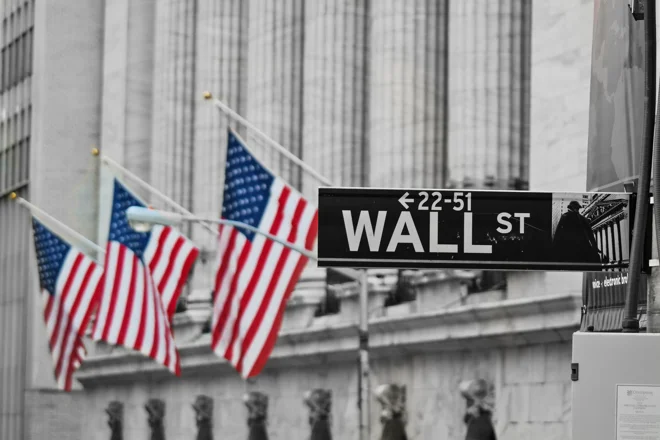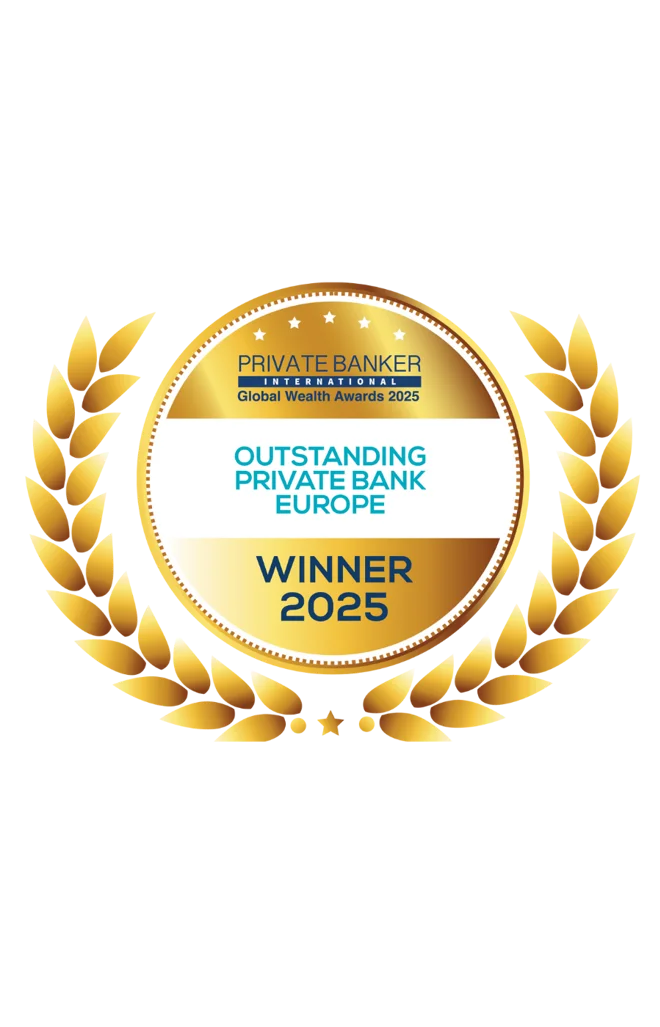WHAT YOU NEED TO KNOW
- Introducing alternatives like hedge funds and private market investments into a portfolio can help to reduce risk and improve long-term returns.
- Today’s investment environment offers interesting investment opportunities for alternative managers with the skills, resources and experience to take advantage.
- Policymakers in Europe and the UK have designed new investment vehicles that encourage investors to support the economic recovery by lending directly to businesses.
The coronavirus pandemic has caused a severe economic downturn and the outlook remains uncertain. Although financial markets around the world have regained their poise, conditions remain volatile and the crisis has left many investors feeling uncertain about their portfolios and what to do next.
We believe that staying invested during periods like these is important for anyone with a long-term perspective. As well as giving your existing holdings the time to recover, this approach provides the opportunity to find other assets at attractive prices. We recommend a diversified portfolio that combines traditional investments like equities and bonds with alternative assets, according to your individual financial objectives and time horizon.
One of the main advantages of including alternatives in a portfolio, such as hedge funds and private market investments, is that they tend to improve risk-adjusted returns.
Alternatives can reduce the volatility of performance because over time they have a low correlation with traditional investments. They also offer the potential for additional returns by providing exposure to different opportunities. Despite the theoretical benefits, many private investors are asking important questions about whether now is the right time to invest in alternatives.
THE HEDGE FUND CHALLENGE
Hedge funds are a diverse group but they share a few attributes. Most focus on absolute (rather than relative) returns, and use hedging, arbitrage and leverage techniques. There are many different strategies and styles available, investing in individual or multiple sectors, regions and asset classes. A diversified basket of hedge funds can improve the risk-return profile of a diversified portfolio because of low correlation with traditional asset classes.
Between January 1990 and May 2020 global equity markets have had losses of more than 4% in a single month in 47 months, including six months where markets fell by more than 10%. By contrast, the commonly followed hedge fund benchmark, the HFRI Fund Weighted Composite Index (HFRI) has only seen four months with losses of more than 4% and no months with losses of more than 10%.
Since 1990 the monthly beta of the HFRI index to US equities has been 0.35. This includes periods of market stress like the one we saw in March. In March, the HFRI index fell 9% and the S&P 500 fell 12.5%, which demonstrates the ability of hedge funds to provide some protection on the downside.
The HFRI index reflects a range of strategies, including long/short equity, which have a higher beta to the S&P 500, historically at 0.46 since 1990, in line with the average net exposure of 50% to 60% of underlying managers. Other strategies are event driven, relative value and macro, which is a diversifying strategy from equities, with a monthly beta of 0.15 with the S&P 500 since 1990.
Equity long/short represents around 50% of the overall index, distorting the representation of the overall statistics. Therefore, portfolio construction and manager selection are even more important in order to isolate managers with superior risk-adjusted returns. The HFRI benchmark does not make the distinction between managers in terms of style, strategy, risk, quality, performance, and therefore should be used as an indicator rather than a reference.
Hedge funds invest in traditional markets using innovative strategies and financial instruments. When these markets don’t function normally, such as in 2008 and again in March 2020, hedge funds can find themselves restricted. For example, a temporary ban on short selling may have been imposed. This gives the impression that hedge funds are highly correlated.
However, conditions can also return to normal rapidly. For example, M&A spreads widened dramatically in March, implying a high probability that M&A deals would fail. Yet when the market realised this outlook was too pessimistic, the performance of risk arbitrage managers recovered sharply.
A diversified portfolio of hedge funds reduces risk and can increase potential returns by giving investors exposure to several managers and strategies. Many of these strategies are now available in regulated vehicles, under legal frameworks that are designed to protect investors, with relatively low minimum investments.
In our current tactical asset allocation positioning we are overweight two specific hedge fund strategies – market neutral and global macro. Market neutral funds typically have low market directionality and aim to outperform with relative value ideas. Global macro funds are appealing as their wide opportunity sets and flexible styles should enable them to provide a decorrelated performance profile.
INVESTING IN THE RECOVERY
The economic impact of the pandemic has created many opportunities within private markets. Private market investors can provide liquidity, rescue and turnaround finance to private companies globally. Some high-quality businesses are finding it difficult to obtain loans from banks and equity partners will need fill the gap to help the recovery. This will create a growing universe of opportunities in the stressed and distressed credit space and in the private financial system.
Private markets have outperformed public markets over the long term on both a relative and absolute basis. The Covid-19 crisis may offer an attractive entry point for long-term investors seeking greater exposure to private markets. Notably, the 2008 crisis vintage year has continued to outperform public equivalents throughout the cycle as a result of constant investment and ownership.
Preliminary performance for Q1 2020 shows some losses, though smaller in magnitude than public markets. US Private Equity (which includes buyout and growth equity funds) is estimated to have fallen by 9.2% during this period (based on 53% of funds reporting). The Global Emerging Markets Private Equity and Venture Capital is down an estimated 5.5% (based on 57% of funds reporting).
Policymakers are responding to the financing needs in the real economy by creating the appropriate investment vehicles that can attract public savings and investments. They include the European Long Term Investment Fund (ELTIF).
This pan-European framework is designed to channel capital towards long-term investments in European and international small and medium-sized companies, infrastructure and certain types of real estate, in line with the European Union’s objective of smart, sustainable and inclusive growth.
The upcoming UK Long Term Asset Fund (LTAF) is a similar initiative. Others include the establishment of a Professional Investor Fund (PIF) that would allow pension funds and professional investors to invest in real estate and infrastructure.
The difficulty of market timing makes it crucial to diversify by investing across several vintage years. Similarly, manager selection remains a critical step to building private market portfolios, as the dispersion of performance between the best- and worst-performing private equity funds is often wider than any other asset class. (The average dispersion of returns from top to bottom quartile among private equity funds is over 1,900 basis points ).
Constructing a diversified private market portfolio requires some tolerance to illiquidity, as well as discipline, knowledge and access to a broad array of investment opportunities —across strategies, geographies, industries and vintage years. Focusing on sustainability issues could help to boost performance. For example, impact investing involves finding companies that combine financial returns with a positive social and environmental outcome. Typically, renewable energy has been the most active infrastructure sector and is likely to continue to offer opportunities as the global economy recovers.
COVID-19 WATCH
Globally confirmed cases of Covid-19 have now exceeded 11.4 million, up from approximately 10.3 million seven days previously. Market participants are closely watching US Covid-19 confirmed cases as figures have accelerated materially since mid-June amid relaxations of social distancing measures.
SECOND WAVE OR GEOGRAPHIC CONTAGION?
Though optically, the US appears to have suffered a second wave with daily confirmed cases first decelerating through May before reaccelerating again in mid-June, the state-level data reveals the US is actually experiencing geographic contagion – not a second wave. States such as New York and New Jersey, which suffered at the start of the second quarter, have not seen a second wave. States such as Texas and California that were relatively unscathed earlier in the year are now the reason for the spike in confirmed cases.
INFECTION OR DETECTION?
However, even geography doesn’t tell the full story.
The US President’s controversial comments in late June that US officials should “slow the testing down” because "by having more tests, we have more cases" have been much maligned by health experts. Clearly, the number of persons with Covid-19 does not fall if fewer tests are conducted; the only thing that goes down is our understanding of the pandemic and our ability to counteract it.
However, we should contextualise the number of confirmed cases by considering the number of tests. Doing so helps us understand whether increases in confirmed cases are due to an increase in Covid-19 infections or, rather, detections. As investors, this is an important distinction. An increase in the prevalence of Covid-19 is likely to lead to further lockdowns, economic damage and a decline in the price of risk assets.
An increase in testing improves policymakers’ understanding of Covid-19, and their ability to counteract the disease. The latter will ultimately lead to the reduced prevalence of the virus as well as positive economic and market outcomes.
In the US, testing has increased substantially. Therefore, at least a portion of the US’s increase in confirmed cases can be attributed to increased testing diligence.
To measure the extent of “infection or detection” we turn to a variant of the analysis we first presented in our 20 April Counterpoint Weekly. This analysis compares the amount of testing and confirmed cases for different countries, and normalises by population size in order to make country-to-country data broadly comparable (reporting practises vary between countries). A “good” situation is to conduct many tests and yield few confirmed cases (top left). A “bad” situation is to conduct few tests yet still yield a lot of confirmed cases (bottom right). For all countries where data is available we plot the latest data point, based on a seven-data moving average of both metrics. A new addition to our analysis is to plot the US’s data as a time series, starting with the red square (14 March) and ending with the orange square (30 June). As we can observe, for a time the US made substantial progress and moved toward the “top left” of the chart – testing more yet uncovering fewer cases of Covid-19. However, in June, the former trend established itself, and not only did confirmed cases increase, but the percentage of tests that came back positive increased as well.
CONCLUSION
The conclusion of this analysis is that Covid-19 related risks in the US have increased in recent weeks, though to a lesser extent than the confirmed case count would suggest. We believe policymakers will be reluctant to enact a second widespread lockdown and will instead pursue local measures as needed. With the bar for further economically damaging shutdowns materially higher than earlier in the year, we remain confident – though vigilant – that economic data and corporate profitability should continue to improve. This will support our risk-on related tactical asset allocation positions, such as our overweight to US equities and emerging market hard currency sovereign debt.
Authors:
- Celine El Debs - Group Head of Alternatives
- Bill Street - Group Chief Investment Officer





